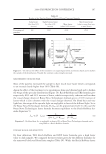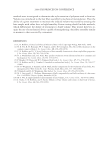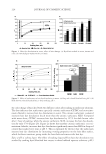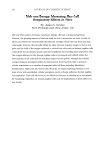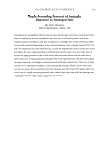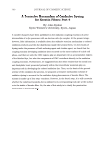JOURNAL OF COSMETIC SCIENCE 102 values for virgin hair data had different variances across ethnicity, thus, the p-values are assumed to be of unequal variances. Both one-way and two-way ANOVA methods (28) were used to determine whether eth- nicity or curl type infl uenced the differences observed in geometrical and mechanical properties for all the ethnic groups within class types VI and VII. In one-way ANOVA, either ethnicity or curl type was considered for the model, whereas, both factors were considered at one time for two-way ANOVA. A Brown-Forsythe test of equality of means (29) was used for one-way ANOVA, which is appropriate for heterogeneous variances and small sample sizes. Signifi cant differences were indicated only if both methods produced consistent results. RESULTS AND DISCUSSION CURL CLASSIFICATION The degree of curl in hair is usually described using words such as straight, wavy, curly, kinky, and frizzy. These descriptors are adequate when used to characterize the global ap- pearance of Asian, Caucasian and African hair as straight, wavy, and very curly, respec- tively. However, these descriptors are poorly defi ned since they are subjective and depend on a point of reference. They become even more inadequate when distinguishing hair within one ethnic group thus, to overcome this obscure method of describing the global appearance of hair, de la Mettrie et al. (5) developed a classifi cation system on the hair shape measurements that were described in Figure 1. For the countries studied, curl classifi cation ranged from type IV to VIII (Table I). Type IV was the least populated whereas most of the hair was classifi ed as type VI. The distri- bution of curl varied according to ethnicity where hair from the United States had a greater number of samples with looser curls and Kenyan hair the highest degree in curl. Hair from other countries varied between two extremes. INFLUENCE OF CURL The average cross section and ellipticity values for hair of curl types IV–VIII ranged from 3296–5176 μm2 1.58–1.73, respectively (Figure 3). These values are consistent with those Table I Curl Class Distribution I II III IV V VI VII VIII AA 0 0 0 3 50 7 15 0 JA 0 0 0 0 10 32 7 1 GA 0 0 0 0 0 22 10 3 LI 0 0 0 1 2 26 4 1 KE 0 0 0 0 2 29 9 7 Total 0 0 0 4 64 116 45 12
2008 TRI/PRINCETON CONFERENCE 103 reported for black hair in the literature (7–9). A regression analysis between the cross- sectional area and curl type shows that there is a statistically signifi cant relationship be- tween the cross section of hair and the degree of curl. Thicker hair fi bers tend to have a looser curl whereas thinner fi bers are curlier. A direct correlation between ellipticity and curl classifi cation is shown in Figure 3b. The data shows that, in general, hair that is more elliptical has a higher degree in curl. Earlier studies also revealed inter-ethnic (10) and intra-ethnic (11) correlations between curl and ellipticity. However, Nagase et al. did not see a strong correlation with curl radius and ellipticity measurements in Japanese hair (12). Even though there are exceptions where straighter hair is highly elliptical or ellip- ticity values can vary on one head, this linear relationship seems to be prominent in hair from people of African descent. Mean Young’s modulus and break stress data are shown as a function of curl type in Figure 4. The values range from 2670 to 3147 MPa and 173 to 206 MPa, respectively, and are consistent with those reported by Franbourg et al. and Wolfram (13,14). The Young’s modulus data shows that less curly hair is more resistant to deformation and break stress shows that it requires higher loads to fracture compared to hair that is curlier. This trend is common knowledge when considering populations based on race since Asian hair, which is straighter, has a higher mechanical integrity compared to Caucasian and Black hair which is curlier (10,13–15). However, this is the fi rst time that a strong correlation is seen in hair samples from one racial group. INFLUENCE OF COUNTRY The cross section and ellipticity values of hair from different countries are compared in Figure 5. The trends in cross section decrease as JA AA LI GA KE and statistical Figure 3. Geometrical properties as a function of curl class n = 12,050 fi bers. (a) Mean x-sectional area ± standard error. (b) Mean ellipticity ± standard error.
Purchased for the exclusive use of nofirst nolast (unknown) From: SCC Media Library & Resource Center (library.scconline.org)














































































